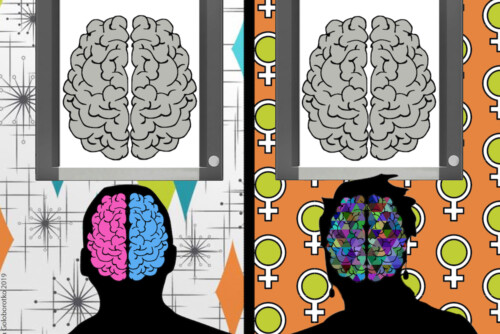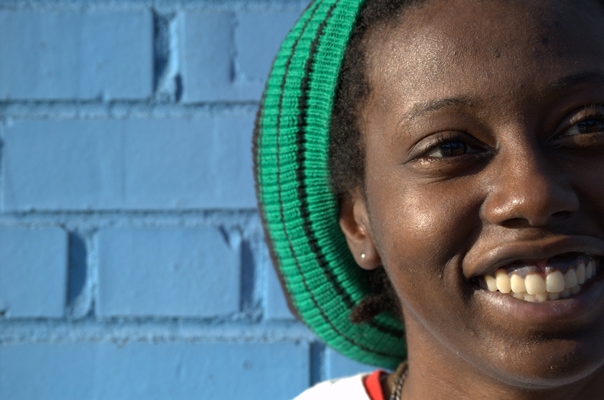
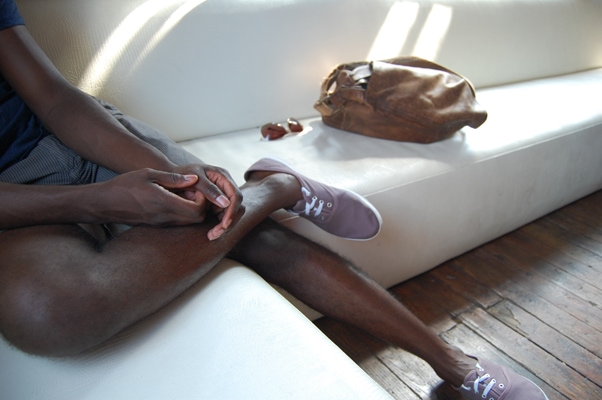
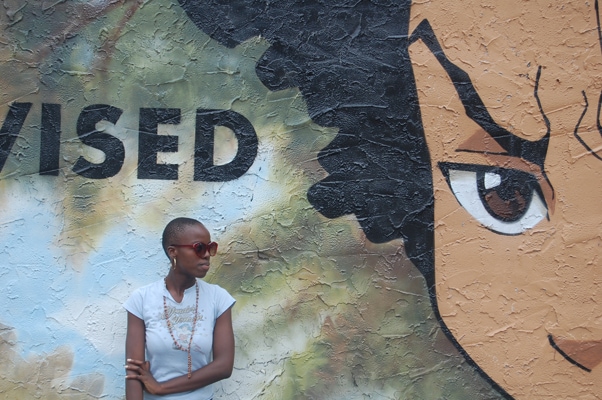


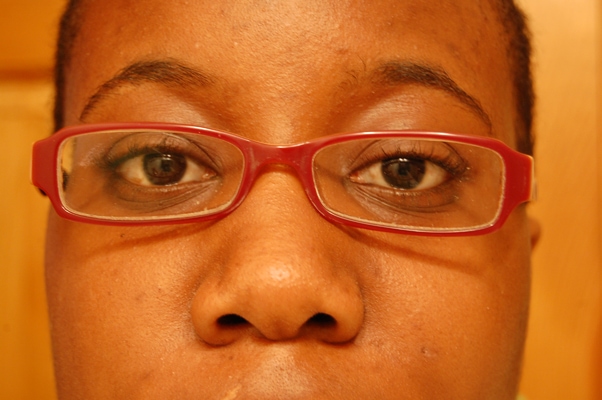
Artist Statement
by Moya Bailey
Abstract:
I want a feminism that doesn’t tokenize or fetishize the marginalized folks within the movement, i.e. people of color, queer folks, people with disabilities, etc. To this end, I am really interested in the margins within the margins and how people with intersecting marginal identities create the world they want to see and resist others’ attempts to use their representations for their own purposes. How do we see ourselves? The Obsidian Project focuses dark skinned queers of color, seeing them/us in new light and listening with intention. By promoting the physical visibility of dark skinned queer folks of color I hope to counter dominating representations that only invoke black skin as a sexualized other. With detailed verbal description of the images, I intend to craft a new narrative based in people’s own realities. In talking with my subjects, I am learning a lot about what it means to be a dark skinned person in a world where colorism is still a difficult conversation, even among folks with a queer politic. This is a project about deepening our understanding of how internalized oppressions are operationalized in activist communities and healing these unspoken wounds.
Text:
I didn’t know I was a dark skinned black girl while I was growing up. There weren’t enough of us for comparison so I was just “the black girl” in my class-privileged, child of two parents who work at “the university” world. The experiences of being the only or one of a handful had a profound impact on my psyche and self perception. It wasn’t until I arrived at Spelman College in Atlanta that I began to really unpack and examine my trauma as it relates to the racial and gender binaries that were imposed on me when I was young.
At Spelman, I saw black women of all shades and sizes, of various types of privilege and lack there of. It was there that I started a lifelong interrogation of the racism that I tolerated on a daily basis in the town whence I had come. Spelman was also where I learned the way racism spreads, infecting the psyches of those abused under its power, festering inside victims and transforming them into abusers themselves. I learned that I was a dark skinned black girl, and it meant something about how other black people would treat me.
My first interaction on campus with a “man of Morehouse,” our unofficial brother school, let me know that black is the color of undesirability. I had arrived early for a summer science program, convinced I was the next Kay Scarpetta 1, before being wooed away from forensics by feminism. Our group was being paired with Morehouse brothers , a tradition between schools that reminds us that proper socialization in a single-sex institution should still be co-educational, if perhaps a little incestuous. One of my “friends” in the program, whose last name put her just after me in line, told me that her Morehouse brother expressed relief that he got her instead of me. He didn’t want a dark skinned Spelman sister.
I was surprised by this for multiple reasons, namely that neither of them were light enough to be considered “light skinned” and that she felt the need to tell me this at all. It was the first in a series of events that let me know that my particular pigmentation had ramifications beyond white people. It was also a reintroduction into the politics of desire; his desire, or rather his un-desire of me was spoken aloud by another woman who was my friend. Whether it was meant to hurt me or not, her statement of his feelings also told me about the tenuous nature of straight sisterhood in the company of men. She understood her role as messenger to be an important one, warning/alerting me to my undesirability despite my inability to do anything about it (Michael Jackson aside).
Perhaps that incident and others like it contributed to my queerness. Not being read as desirable by men, white or black, in a society that taught me that there was so much value in that desire, significantly shaped my sense of self. Which came first the queer (noun/identity) or the queer (verb/politics) 2? I don’t know but I am clear that it has been and continues to be my path to liberation. Women’s Studies and queerness opened me up to thinking about the complexity of our world and relationships, in-group policing to appease an omnipresent norm, and the ways in which we hurt each other because we’ve been hurt ourselves.
As of late I have been involved in queer organizing, love, and friendship. I feel honored to be connected to a network of queer people of color (QPOC) activists thinking deeply and acting passionately to try and press the global reset button before it’s too late. We come from a variety of backgrounds, cultures, communities, and skin complexions. And initially I didn’t realize that the last point mattered, in the sense that it was a derivative of something else more salient like race and country of family origin. Yet, over time the politics of skin color in activist space became apparent. Where were the dark skinned QPOC’s?
I saw light skinned black folks, Asian people who identified as transgendered, Arab women, Latino genderqueers, but I rarely saw my own complexion represented by someone other than myself. “Where are we,” I wondered? Do terms like “queer” and “organizer/ activist” not resonate with our realities? I went in search of us. I went in search of reflection. I found five folks willing to be photographed and asked questions about the skin they’re in. Five.
I encountered no epiphanies about marginalization, no insights into the realities of colorism within our movements other than it’s real. I don’t know that the language is formulated yet to speak to our existence and absence in QPOC space. So I let the pictures tell the story along with words from each subject about their relationship to their skin. The pictures tell skin stories of Fee, Stanton, Lamont, Danny, Corinne, and me. We who are willing to hold the labels queer, dark, and black. These are the first images in the Obsidian Project, so named because dark black is the color that animates this narrative, and it sounds as absurd and as silly a word as could describe the illegibility and absence of dark skinned queer movement makers in this contemporary moment.
Images and quotes were captured and recorded between June-August of 2010 and are reproduced with permission.
Artist Links
- Kay Scarpetta was the medical examiner heroine in the novels of Patricia Cornwell.[↑]
- Queer disability justice activist and transracial Korean adoptee Mia Mingus coined terms “descriptively disabled” and “politically disabled” to talk about the differences between in group recognition/affiliation and an active claiming of a political voice connected to marginalized subjectivity.[↑]


